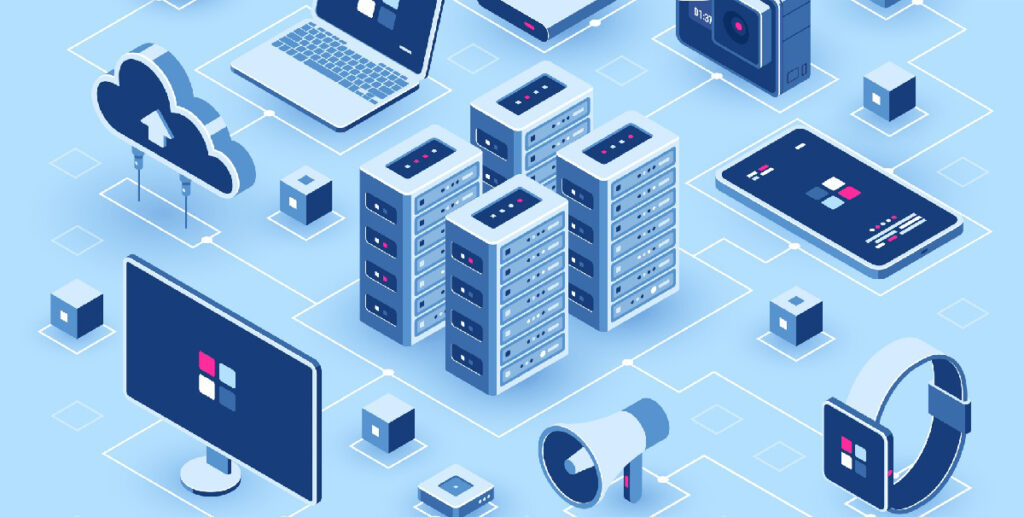Table of Contents
Today we all work in a continually changing environment, and such conditions require a quick response and adaptation. It isn’t easy to find a company that would use only one software product in its work. What happens when different systems run on other platforms, each of which plays an essential role in your business? Most likely, you lose data. Some information is stored in one place, and some in another. Thus, inconsistencies and difficulties regularly arise to present a holistic picture of the business’s state here and now.
To stay relevant, companies need to quickly switch between SaaS product development and cloud providers, scale to meet requirements, process outputs when SaaS services are unavailable and have the flexibility to run in a private cloud. The ideal approach to solving this problem is using iPaaS solutions. This article will talk about what kind of solution it is, its benefits, and how best to use it.
iPaaS is a platform that connects disparate systems to provide customers with a single solution. It acts as a channel for communication between multiple systems, enabling integration and data exchange.
iPaaS gives platforms unlimited potential, and as we increase our dependence on the cloud, iPaaS is becoming an integral part of almost every business model.
What is iPaaS (Integration Platform as a Service)?
iPaaS is a platform that connects disparate systems to provide customers with a single solution. It acts as a channel for communication between multiple systems, enabling integration and data exchange. It also allows you to deploy and maintain integration flows without the need for hardware or middleware, both within the organization and between the organization and third-party software.
It is not uncommon to use different systems in the same company, for example, between sales, marketing, and service departments. iPaaS helps improve communication between other storage locations through software integration, leading to improved communication within an organization.
It is worth mentioning that through iPaaS, companies can expand their offer without the need to create additional services. Instead, it can integrate with other software that already provides this service and offer customers a single, more reliable solution.
Let’s take an example, your company is engaged in the production and sale of building materials, and you have software with which customers place an order for goods from you. Next, you want to combine this solution with the one that works in the purchasing department of materials for production so that there are no interruptions in supply.
To meet this need, you can either create and add these features to your product or use iPaaS to connect your software to existing automation software. The latter allows you to save time and money and expand your service offer through earlier procurement planning.
Core Functionalities of iPaaS Solutions
A strong iPaaS solution includes distinct characteristics, which are vital to the achievement of the platform.
How does iPaaS work?
The software company uses iPaaS as an infrastructure to create connections and deploy software applications to the cloud.
Next, the parameters are configured for the types of connections allowed on the platform. These parameters can be in the form of application programming interface (API), built-in connectors, and so on.
Then iPaaS creates a central ecosystem for viewing, managing and changing all data, infrastructure and operations. As a result, you can easily change your product, exchange information and propose solutions for your market.
The difference between iPaaS Vs. PaaS
Although iPaaS and PaaS are similar in writing, their functions are entirely different.
PaaS (Platform-as-a-service) is a cloud solution in which a provider provides customers with a platform to develop, run, and manage business applications. They do not need to build and maintain the infrastructure that is usually needed for such processes.
Small businesses with a variety of applications will need iPaaS at some point. The main reason is that these apps are from different vendors. They are not natively linked, while PaaS-based applications usually reside in the same environment.
The most significant difference between PaaS and iPaaS is that these features are purely integration-oriented. And also, to work with PaaS you will need a development team as opposed to this, iPaaS tools are usually designed in such a way that any member of any team can create an integration without the need for coding.
iPaaS Vs. ESB
The ESB approach came about because there was a need to manage local data or legacy systems. It dates back to before cloud systems/integrations existed. The main difference between ESB is that this solution works on-premises, while iPaaS is cloud-based solutions. This does not mean that the ESB will not be able to integrate with the cloud application, but this approach will be less effective.
They also differ in their scalability. Where iPaaS is used, it is easy to integrate new applications. iPaaS typically allows as many connections as you want between the hundreds of applications it supports. With an ESB, it can take several months for a new application to be implemented.
And most importantly, iPaaS can work with a large number of users simultaneously, unlike ESB.
Benefits of iPaaS Solution
An iPaaS platform influences the agility, speed, and economics of cloud service to support business attain its digital transformation objectives and produce several major business benefits.
Detailed benefits of iPaaS:
#1 Changing the architectural and licensing model.
The iPaaS approach has no limitation for ESB models or other legacy middleware. All integrated solutions are easily controlled in one place.
Most iPaaS allows an enterprise to deploy the integration execution engine anywhere — on-premises or in the cloud (public or private clouds). The move to iPaaS in architecture drives business strategy forward by offering a multi-channel digital platform that connects data, applications, and processes.
#2 Support for low code development.
This approach (iPaaS) has a low code level. In other words, developers can visually display integrations and use off-the-shelf connectors, which in turn provide significant productivity gains and accelerate the organization’s digital transformation. It also helps developers to work with the integration of on-premises and cloud applications efficiently.
#3 Great user experience.
The iPaaS platform offers new customized experiences for customers by tightly integrating server-side data and applications to interact with the Internet and mobile devices instantly.
#4 Increased productivity.
IPaaS improves productivity when designing integration flows. The monitoring and control process prevents disruptions and maintains the safe inclusion of new participants in the process. The user-friendly and intuitive design of this solution allows enterprises to speed up cost-effectively connecting to multiple systems.
#5 Updates instead of updates
iPaaS offers automatic, reliable, and regular updates that reduce maintenance costs and increase reliability. This is important when integrating with SaaS application development that regularly provides updates to their security protocols and APIs. The right solution iPaaS updates activities regularly so the user does not need to worry about support.
#6 Optimization of the decision-making process
Each wrong decision can lead to severe consequences, so decision-makers need to react to everything that happens in their business environment instantly.
Because iPaaS typically narrows the gap between business intelligence and data entry, businesses can track operational data in real-time and make the most accurate decisions. Also, because the iPaaS solution runs in the cloud, it can retrieve data from multiple devices, reducing the time it takes to get the information you need.
#7 Security
The cloud integration process may not always be secure when exchanging data between cloud and on-premises applications. iPaaS can transfer data more securely without requiring client codes. This solution can reduce the risk of a security breach because it offers essential security features such as real-time intrusion alerts, fraud detection, and readily available reports.
#8 Scalability
A critical business advantage, scalability on both the technical and commercial sides, allows a business to grow and expand its capabilities to meet requirements easily.
#9 Agile Enablement
Modern business trends demand flexibility from companies. iPaaS provides them with this. Business agility is the ability to effectively and quickly adapt to changes in the business ecosystem.
#10 Marketing and sales optimization
Connecting marketing automation or CRM through iPaaS solution can remove duplicate records and speed up data flows. Consequently, sales and marketing follow-up is more efficient and timely.
IPaaS Integration Best Practices
iPaaS is a solution for integrating your business technology ecosystem to truly take your business to the next level and drive increased data flow. To effectively improve your business, follow the recommendations below. Before starting the implementation of iPaaS, it is necessary to draw up a detailed plan according to which data will be integrated between several applications.
And so, a few tips on how to carry out the implementation effectively:
- Ask yourself what goal should be achieved using data integration. For example, by integrating internal business data, you can create high-quality analytic reports, which in turn will allow you to see the big picture of your business better.
- Decide which data you will integrate first. The goals you defined earlier will help you with this. IPaaS platforms set up algorithms to synchronize the same type of “object” between applications. These objects can be names, email addresses, transaction details, service tickets, and so on. However, not every iPaaS can integrate all of your application objects.
- Define how the data exchange between your instruments will take place. You may need one-way trigger transmission or real-time two-way sync.
FAQ
Summary
iPaaS is a quality replacement for traditional integration methods. This approach helps businesses scale more easily and quickly integrate SaaS, third-party services, and legacy systems. Considering all these advantages, iPaaS is of great interest to companies of all sizes, from corporations to small businesses.








